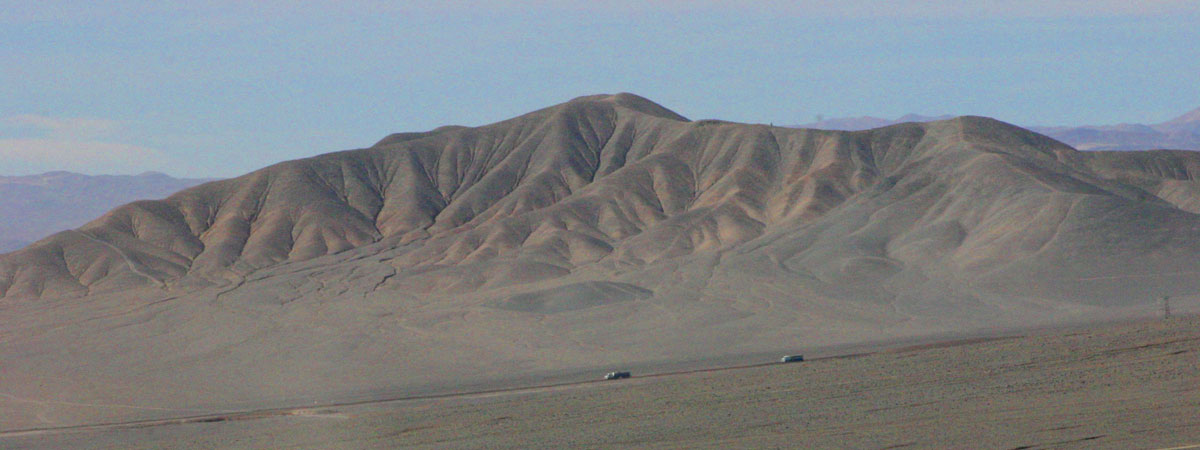
Antofagasta is a fast-growing city nestled between the Pacific Ocean and the Atacama desert in northern Chile.
The town was founded in the mid-1800s when the territory was part of Bolivia, and grew around the mining industry. This was initially due to large deposits of sodium nitrate (saltpeter) deposits discovered nearby. This was an essential compound for explosives and fertilizers - and was supplied almost exclusively by mining deposits along South America's Pacific Coast. Disputes over this resource, and control of the mining communities that sprang up around it, resulted in the Pacific War of 1873. The lasting impact of this war was that Chile's borders pushed northwards - acquiring Antofagasta and all Bolivia's former costal territories.
The nitrate boom ended in the early 20th century when German scientists discovered a means to synthesize Sodium Nitrate in commercial quantities. However, the region's other mineral wealth - particularly Copper - means that mining is still the dominant industry today. Chile is the world's largest producer with at least one-third of the world's share - resulting in significant investment and growth over the last decade.
Antofagasta (like most of South America's Pacific Coast) has a rich marine life thanks to the presence of the Humboldt current. By contrast, the landscape is almost devoid of life - as the surrounding Atacama Desert is among the driest on earth - but offers spectacular scenery.
Learn more about Antofagasta in Wikipedia.
The town was founded in the mid-1800s when the territory was part of Bolivia, and grew around the mining industry. This was initially due to large deposits of sodium nitrate (saltpeter) deposits discovered nearby. This was an essential compound for explosives and fertilizers - and was supplied almost exclusively by mining deposits along South America's Pacific Coast. Disputes over this resource, and control of the mining communities that sprang up around it, resulted in the Pacific War of 1873. The lasting impact of this war was that Chile's borders pushed northwards - acquiring Antofagasta and all Bolivia's former costal territories.
The nitrate boom ended in the early 20th century when German scientists discovered a means to synthesize Sodium Nitrate in commercial quantities. However, the region's other mineral wealth - particularly Copper - means that mining is still the dominant industry today. Chile is the world's largest producer with at least one-third of the world's share - resulting in significant investment and growth over the last decade.
Antofagasta (like most of South America's Pacific Coast) has a rich marine life thanks to the presence of the Humboldt current. By contrast, the landscape is almost devoid of life - as the surrounding Atacama Desert is among the driest on earth - but offers spectacular scenery.
Learn more about Antofagasta in Wikipedia.

Loading Flickr Images